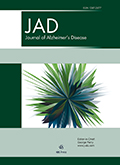Authors: Han, Kaiyue | Liu, Guangliang | Liu, Nan | Li, Jiangyi | Li, Jianfeng | Cui, Lihua | Cheng, Ming | Long, Junzi | Liao, Xingxing | Tang, Zhiqing | Liu, Ying | Liu, Jiajie | Chen, Jiarou | Lu, Haitao | Zhang, Hao
Article Type:
Research Article
Abstract:
Background: The current application effects of computerized cognitive intervention are inconsistent and limited to hospital rehabilitation settings. Objective: To investigate the effect of mobile intelligent cognitive training (MICT) on patients with post-stroke cognitive impairment (PSCI). Methods: This study was a multicenter, prospective, open-label, blinded endpoint, cluster-randomized controlled trial (RCT). 518 PSCI patients were stratified and assigned to four rehabilitation settings, and then patients were randomized into experimental and control groups in each rehabilitation setting through cluster randomization. All patients received comprehensive management for PSCI, while the experimental group additionally received MICT intervention. Treatment was 30 minutes
…daily, 5 days per week, for 12 weeks. Cognitive function, activities of daily living (ADL), and quality of life (QOL) were assessed before the treatment, at weeks 6 and 12 post-treatment, and a 16-week follow-up. Results: Linear Mixed Effects Models showed patients with PSCI were better off than pre-treatment patients on each outcome measure (p < 0.05). Additionally, the improvement of these outcomes in the experimental group was significantly better than in the control group at week 6 post-treatment and 16-week follow-up (p < 0.05). The rehabilitation setting also affected the cognitive efficacy of MICT intervention in improving PSCI patients, and the degree of improvement in each outcome was found to be highest in hospital, followed by community, nursing home, and home settings. Conclusions: Long-term MICT intervention can improve cognition, ADL, and QOL in patients with PSCI, with sustained effects for at least one month. Notably, different rehabilitation settings affect the cognitive intervention efficacy of MICT on PSCI patients. However, this still needs to be further determined in future studies.
Show more
Keywords: Alzheimer’s disease, cognitive impairment, mobile intelligent cognitive training, rehabilitation, stroke
DOI: 10.3233/JAD-240356
Citation: Journal of Alzheimer's Disease,
vol. Pre-press, no. Pre-press, pp. 1-17, 2024
Price: EUR 27.50





